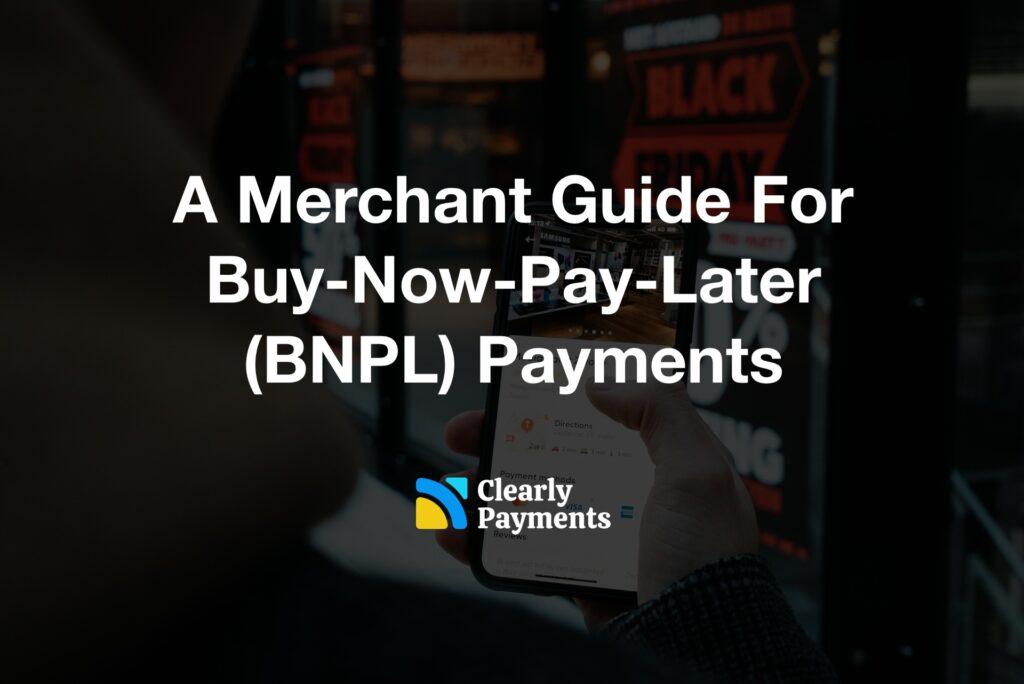The landscape of payment processing has evolved with the introduction and widespread adoption of innovative payment solutions. One solution that has gained traction is Buy-Now-Pay-Later (BNPL).
BNPL services allow consumers to make purchases and defer payment, often breaking it down into smaller, more manageable installments. This model has disrupted traditional payment methods and has become increasingly popular among consumers, especially millennials and Gen Z, who value flexibility and convenience in their purchasing experience.
For merchants, understanding how BNPL works in payment processing is important to capitalize on this trend and adapt their businesses to accommodate these changing consumer preferences.
How BNPL Works for Merchants
BNPL services enable consumers to make purchases without paying the full amount upfront. Instead, they can spread the cost over a series of installments, typically interest-free or with low interest rates.
For merchants, integrating Buy Now, Pay Later (BNPL) into their payment processing systems offers a unique avenue to drive sales, entice new customers, and mitigate certain risks. Here’s a breakdown of how BNPL works for merchants:
Transaction Flow:
Customer Chooses BNPL: During the checkout process, customers are presented with the option to utilize a BNPL service instead of conventional payment methods like credit cards.
Merchant Gets Paid Upfront: After the consumer uses BNPL to pay, the BNPL provider immediately sends the full purchase amount to the merchant, ensuring immediate payment for the goods or services. However, the merchant will typically pay nominal transaction fees in the process.
Customer Repays BNPL Provider: Subsequently, the customer repays the BNPL provider in installments, adhering to payment plan. These installments often have low interest terms for shorter durations, enhancing the appeal for consumers.
BNPL Manages Risk & Collections: The BNPL provider handles any potential default by customers and assumes responsibility for managing collections, alleviating merchants of associated risks and administrative overhead.
By embracing BNPL, merchants can streamline transactions, improve cash flow, and broaden their customer base while offloading the complexities of payment processing and risk management to specialized BNPL providers.
BNPL Adoption, Growth, and Statistics
The Buy Now, Pay Later (BNPL) phenomenon has rapidly gained traction, transforming the payment landscape with its convenient installment-based approach while giving merchants immediate payment. Let’s dig into some key statistics shaping the BNPL market:
- The global BNPL market is projected to reach $122.19 billion by 2030, with a robust compound annual growth rate (CAGR) of 22.0%.
- In the US, adoption rates have surged among the top 1,000 online retailers, with 46% of the businesses offering BNPL options as of 2023, up from 28.2% in 2020.
- Millennials and Gen Z driving adoption, with 16% of 18-34 year-olds using BNPL
- The USA BNPL lending forecast to top $100 billion in 2024, a 13x increase from 2019. Statistics show PayPal’s “Pay in 4” as the most popular option in the US, followed by Afterpay, Affirm, and Klarna.
Fashion and electronics sectors lead BNPL adoption, underscoring its appeal for discretionary spending. Larger retailers are more likely to offer BNPL compared to smaller businesses, reflecting a trend toward broader adoption among established players.
As BNPL continues to reshape the payment landscape, these statistics underscore its growing influence and highlight opportunities for merchants to leverage this trend to enhance customer experience and drive sales.
Benefits of BNPL for Merchants
- Increased Sales: BNPL options can attract customers who prefer the flexibility of spreading payments over time, leading to higher conversion rates and larger order values.
- Improved Customer Experience: Offering BNPL enhances the shopping experience by providing consumers with more payment flexibility and control, leading to higher customer satisfaction and loyalty.
- Risk Mitigation: Since BNPL providers assume the risk of non-payment, merchants are protected from default or chargeback issues, reducing their financial exposure.
Challenges for Merchants Using BNPL
While BNPL presents opportunities for merchants, it also comes with its own set of challenges and considerations:
- Integration Complexity: Integrating BNPL into existing payment systems may require technical expertise and coordination with BNPL providers and payment gateways.
- Fees and Commissions: BNPL providers typically charge merchants a fee or commission for each transaction, which can impact profit margins.
- Customer Service: Merchants may need to handle inquiries and support related to BNPL transactions, including refunds, cancellations, and payment inquiries.
Best Practices for Integrating BNPL
Navigating this BNPL landscape requires strategic implementation to harness its full potential and mitigate potential pitfalls. Here are key best practices for merchants thinking to use BNPL:
Partner with the Right Provider:
Selecting the best BNPL provider is important. Consider your target audience and industry nuances when researching providers as different platforms cater to diverse customer segments and transaction volumes. Evaluate fees, chargeback policies, and integration processes to ensure compatibility with your business model.
Promote Effectively and Transparently:
Transparently present BNPL options across your platforms, emphasizing the benefits for customers. Educate customers about BNPL terms, fees, and repayment schedules to foster trust and avoid confusion. Display fees transparently at checkout to enhance transparency and build credibility.
Enhance the Customer Experience:
Optimize the BNPL experience and approval process to ensure a seamless checkout experience, reducing cart abandonment. Personalize BNPL offerings based on customer behavior or purchase history to enhance relevance and conversion rates. Provide responsive customer support to address inquiries promptly and nurture positive brand relationships.
Manage Risk and Responsibility:
Monitor customer behavior for signs of overspending or default risk, offering educational resources or partnering with responsible lending providers to promote financial literacy. Stay compliant with evolving regulations and adhere to fair lending practices, mitigating regulatory risks. Partner with reputable fraud prevention providers to safeguard against fraudulent activities, protecting your business and customers.
Continuously Evaluate and Adapt:
Regularly track key performance metrics such as conversion rates, average order value, and customer satisfaction to gauge the impact of BNPL on your business. Refine your BNPL strategy based on performance analysis, adjusting offerings, partnerships, and promotions to optimize ROI. Stay abreast of industry trends and BNPL innovations to remain agile and capitalize on emerging opportunities.




